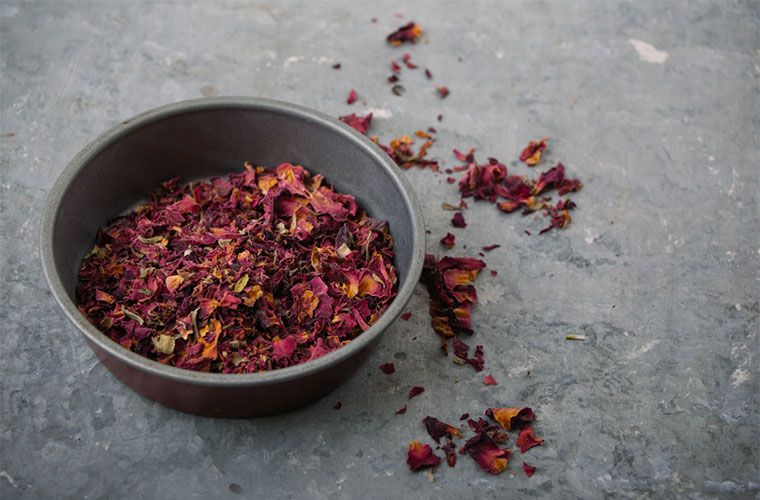This 2-Ingredient Rosewater Toner Recipe Gives Your Flower Bouquet New Life

Roses are to Valentine's Day what avocados are to smoothies—a key component. But if you want your bouquet to last a little longer than a week, Homestead Design Collective's Stefani Bittner and Alethea Harampolis have a genius way to give wilting petals new life: using them to make a skin-soothing rosewater facial cleanser.
With just the remains of your bouquet and some H2O, you can create an anti-inflammatory toner that not only acts as a cooling astringent, but also provides a lovely, calming scent.
The inspiration for this recipe was born from what you could call a family love. "We both grew up in our moms' gardens and have been lifelong gardeners," Harampolis says of the duo's flower-crafting ways (many of which are shared in their new book, Harvest).
Consider this the gift that keeps on giving.
Ready to nourish your skin? Scroll down to see how to DIY your own rosewater facial toner.

Rosewater Facial Toner
Ingredients
15 to 30 roses
3 cups distilled water
About 12 ice cubes
1. Dip the roses in cold tap water to clean them, and remove the petals. Place a medium heatproof bowl upside down in the bottom of a large pot.
2. Scatter the rose petals around the inverted bowl. Pour the distilled water over the petals, then place a second heatproof bowl on top of the first, right side up. Cover the pot with the lid placed upside down so that the handle of the lid is inside the pot.

{{post.sponsorText}}
3. Bring the water to a gentle simmer on the stove. When you see condensation on the underside of the lid, place a few ice cubes directly on top of the lid or on a dish towel on top of the lid; this helps attract the rose essence–filled condensation to the center of the lid, so that it can drip into the bowl. Continue simmering the petals until all the water has been collected in the top bowl, which can take about 45 minutes. (Be careful not to boil longer than this. The delicate essence can overcook or you can scorch the pan if the water boils out.)
4. Remove the top bowl from the pot. Carefully pour the hot rosewater from the bowl through a funnel into a sealable bottle or small jar. Be careful not to spill any of the precious essence. Your rosewater is ready to use and will keep for up to three months.
5. Strain the remaining petals from the water and collect any water left in the pan. The simmered water is darker in color than the essence, but it still smells wonderfully rosy. Add it to your rosewater or keep it separate and use it to flavor drinks or baked goods.
If you're looking for some other ways to show yourself some self-love, try one of these three plant-based craft projects or turn your bath into a dreamy, self-revitalizing ritual.
Loading More Posts...